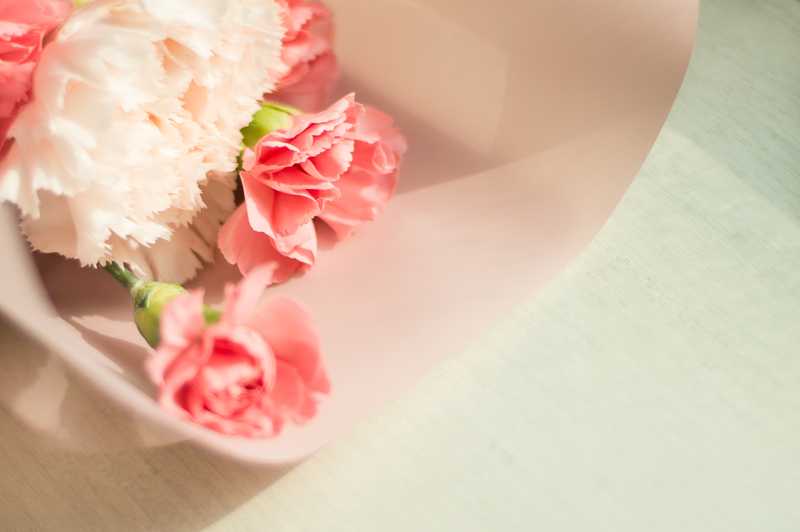Window Box Gardening Tips: Finding the Right Plants for Your Space
If you're looking to add charm, color, and vitality to your home, window box gardening is a fantastic choice. Whether you live in a bustling city apartment or a quiet suburban home, well-planted window boxes can make your space come alive. However, selecting the right plants for your window boxes requires more than just picking out your favorites. In this comprehensive guide, we'll uncover window box gardening tips and help you find the best plants for your unique space.
Why Choose Window Box Gardening?
Window boxes offer a delightful way to personalize and enhance the appearance of your home. Not only do they contribute to your home's curb appeal, but they also provide benefits such as:
- Improving air quality
- Attracting pollinators like bees and butterflies
- Offering easy access to fresh herbs and edible plants
- Allowing gardening without the need for a large yard
With these benefits in mind, let's explore how to select and nurture the perfect plants for window box gardening.

Assessing Your Window Box Conditions
Before choosing plants for your window box garden, it's critical to understand the environment where they'll thrive. Ask yourself the following questions:
1. How Much Sunlight Does Your Window Box Receive?
The amount of sunlight your window box receives is a key factor in plant selection. Observe your chosen area for a few days and note how much direct sun it gets:
- Full Sun: 6 or more hours of direct sunlight daily
- Partial Sun/Partial Shade: 3-6 hours of direct sun
- Full Shade: Less than 3 hours of direct sunlight
*Tip: Most window boxes on southern or western exposures tend to get more sun, while eastern or northern exposures may be shadier.*
2. How Big and Deep Is Your Window Box?
Window box size matters. Deeper boxes allow for more root growth and a greater variety of plants. Measure your window box's length, width, and depth before purchasing plants. Deeper boxes (at least 8-10 inches) are ideal for mixed plantings and robust root systems.
3. What Is Your Climate Zone?
Understanding your hardiness zone helps in selecting plants that will thrive in your geographic location. The USDA Plant Hardiness Zone Map is a helpful resource for American gardeners, but similar guides are available worldwide.
Choosing the Best Plants for Window Box Gardening
When considering plants for your window box garden, keep in mind three key elements for creating visually appealing arrangements:
- Thrillers: Tall, eye-catching plants for height
- Fillers: Medium-height, bushy plants to fill space
- Spillers: Trailing plants that cascade over the edges
By combining these, you can create dynamic container displays throughout the growing season.
Top Plant Choices for Sunny Window Boxes
- Geraniums (Pelargonium spp.): Known for their vibrant colors and long blooming season, geraniums are sun-lovers and drought-tolerant once established.
- Petunias: Offering a range of colors, petunias bloom profusely with full sun exposure and regular deadheading.
- Lavender: Not only does lavender love the sun, it also provides fragrance and pollinator appeal to your window box.
- Calibrachoa ("Million Bells"): These mini-petunias trail beautifully and thrive in sunny spots.
- Basil and Oregano: If you want an herb window box, these herbs enjoy sunshine and enhance your kitchen creations.
Ideal Plants for Partial Shade
- Impatiens: These colorful flowers excel in low light and offer continuous blooms.
- Begonias: With stunning foliage and flowers, they thrive where sunlight is dappled.
- Fuchsia: Their drooping blooms add elegance to shaded window boxes.
- Lobelia: A beautiful trailing plant perfect as a shade-loving filler.
- Parsley and Mint: These herbs grow well in less sunlight and are handy for cooking.
Best Plants for Full Shade Window Boxes
- Hostas: Their lush foliage brings life to the shadiest spaces.
- Heuchera (Coral Bells): Known for their colorful leaves, these plants offer year-round interest.
- English Ivy: A classic spiller for fully shaded locations.
- Fern species: Give your box a woodland feel with the graceful fronds of small ferns.
- Chives: For those who prefer edibles, chives tolerate shade well.
Window Box Gardening Tips for Thriving Plants
1. Use High-Quality Potting Mix
*Never use garden soil in your window box*, as it can compact and hinder drainage. Instead, use a lightweight, water-retentive potting mix formulated for containers. This ensures good root health and reduces the risk of root rot.
2. Ensure Proper Drainage
Your window box must have adequate drainage holes to prevent soggy soil and root diseases. If your container doesn't have these, carefully drill a few holes at the base. You can add a thin layer of gravel beneath the soil to improve further drainage, but it's often unnecessary with modern potting mixes.
3. Feed and Water Consistently
Plants in window boxes require regular watering, especially those in full sun or exposed to wind. During the summer, you may need to water daily. Adopt a consistent fertilizing routine as well:
- Liquid fertilizer every 2-4 weeks encourages continuous growth and flowering
- Avoid over-fertilizing, which can lead to lush foliage but fewer blooms
4. Groom and Deadhead for Longer Blooms
Remove spent flowers (deadheading) to promote fresh blooms and keep plants looking tidy. Pinch back leggy stems to encourage bushier growth. Indoors, inspect for pests and diseases so problems can be addressed quickly.
5. Plan for the Seasons
You don't need to change your entire planting scheme with each season, but introducing a few seasonal changes can keep your window box looking fresh year-round. In autumn, consider ornamental kale or dwarf evergreens. For winter interest, try snowdrops or hellebores, and use spring-flowering bulbs for early color.
Creative Window Box Gardening Ideas
Elevate your curb appeal and express your style with these inspiring window box ideas:
- Edible window boxes: Mix herbs, lettuce, and even strawberries for a beautiful and functional display.
- Pollinator-friendly plantings: Include native blooms to attract beneficial bees and butterflies.
- Succulent oasis: For sunny, dry sites, a mix of small succulents can thrive in a shallow box.
- Seasonal celebrations: Update your window box with miniature pumpkins in fall or conifer branches in winter.
- Color-themed gardens: Stick to one color palette--such as soothing blues and whites or hot oranges and reds--for visual harmony.
Common Window Box Gardening Mistakes to Avoid
While it's easy to fall in love with window box gardening, there are a few common pitfalls to keep in mind:
- Overcrowding: Plants need room to grow; overcrowding can stunt their development and increase disease risk.
- Poor drainage: Waterlogged soil is a leading cause of root rot in container gardens.
- Ignoring sun requirements: Putting sun-loving plants in a shady spot, or vice versa, results in poor growth and few flowers.
- Inconsistent watering: Window boxes dry out quickly; create a schedule or install a self-watering system.
- Forgetting to use good soil: Ordinary dirt won't provide the nutrients and structure your plants need.

Frequently Asked Questions about Window Box Gardening
What size window box do I need for my plants?
As a general rule, a box at least 8 inches deep and 6-8 inches wide will suit most annuals and herbs. Larger boxes allow for more diverse and lush plantings.
Can I plant perennials in window boxes?
Absolutely! Compact perennials like heuchera, hostas, and small ornamental grasses are excellent choices for year-round displays. Be sure they're suited to your climate and box size.
Do I need to line my window box?
Lining with landscape fabric helps contain soil while letting water drain. Avoid plastic liners without drainage holes, as they can cause waterlogging.
Which plants are best for a fragrant window box?
Strongly scented partners like lavender, sweet alyssum, heliotrope, and some miniature roses offer delightful fragrance near open windows.
Window Box Gardening: In Summary
With these window box gardening tips and plant selection advice, you're well on your way to creating a beautiful, thriving window garden that suits your space and personal style. Remember to choose plants that match your sunlight, climate, and care preferences. With regular attention and a little creativity, your window boxes will bloom and flourish, brightening both your home and your day.
Enhance your gardening journey by experimenting with different plant combinations and designs throughout the seasons. The possibilities are endless--start your window box gardening adventure today!
```